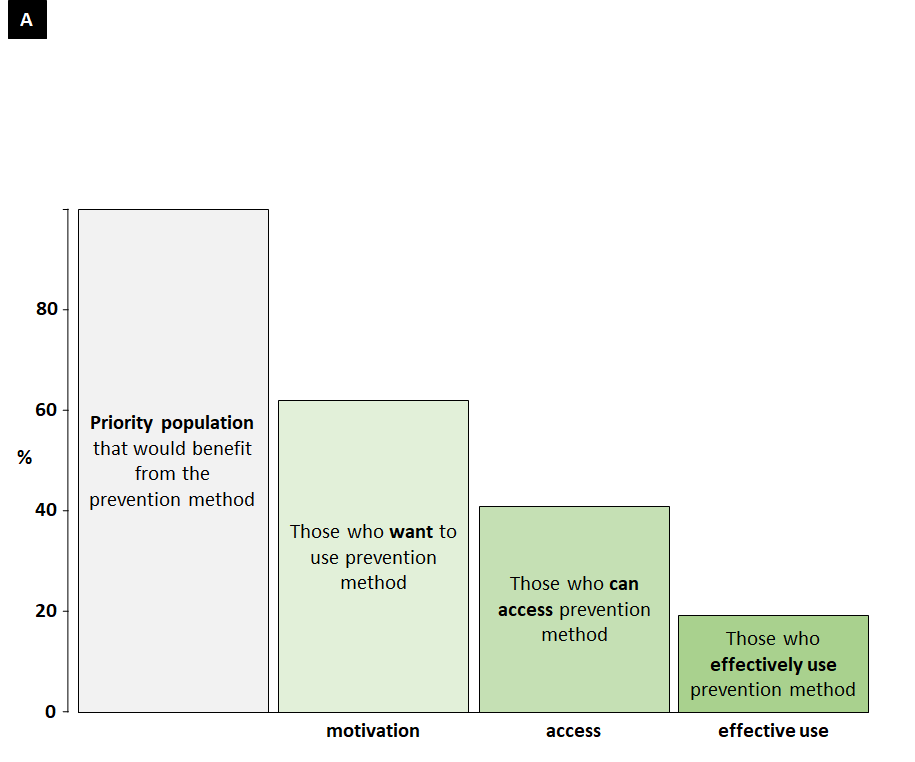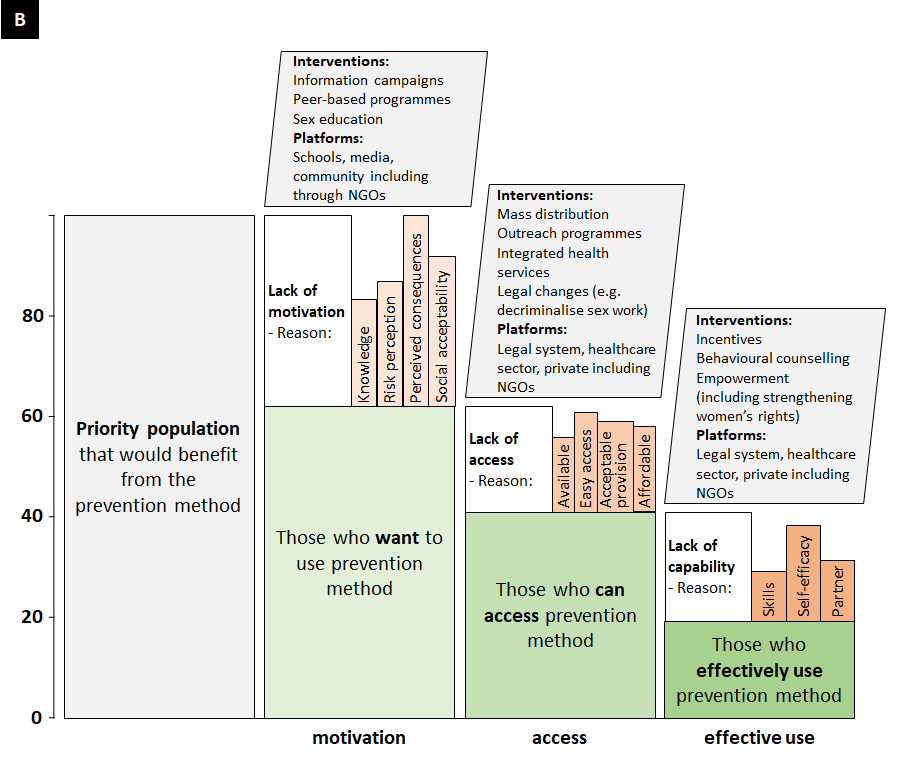HIV prevention cascades
This study addressed the neglected but urgent need to intensify implementation of effective HIV prevention methods beyond treatment-as-prevention in sub-Saharan African populations subject to hyper-endemic HIV. The HIV prevention cascade (HPC) framework provides a promising new tool for use in evaluating and facilitating progress in implementing these interventions, but scientifically robust methods are needed for measurement and interpretation of HPCs.
In response, the Manicaland Centre, with support from the Bill and Melinda Gates Foundation, has developed improved methods for collecting data in population-based surveys for use in measuring and interpreting HPCs for major HIV prevention methods that focus on risk groups for which prevention can have the greatest population impact. HIV prevention methods covered include voluntary medical male circumcision; pre-exposure prophylaxis; and male and female condoms.
For each HIV prevention method (or combination of methods), the study used mixed-methods research to refine definitions and methods for correctly and completely identifying members of the key target groups. The study also has defined each step in the HPC and developed improved survey questions for measurement. Theoretical frameworks and questions for interpreting survey data on HPCs have been developed and tested.
In response, the Manicaland Centre, with support from the Bill and Melinda Gates Foundation, has developed improved methods for collecting data in population-based surveys for use in measuring and interpreting HPCs for major HIV prevention methods that focus on risk groups for which prevention can have the greatest population impact. HIV prevention methods covered include voluntary medical male circumcision; pre-exposure prophylaxis; and male and female condoms.
For each HIV prevention method (or combination of methods), the study used mixed-methods research to refine definitions and methods for correctly and completely identifying members of the key target groups. The study also has defined each step in the HPC and developed improved survey questions for measurement. Theoretical frameworks and questions for interpreting survey data on HPCs have been developed and tested.
The Harare Prevention Cascade: A generic and unifying HIV prevention cascade framework
|
Figure A: The core steps of the cascade of motivation to use the prevention method, access to it, and effective use of it in a priority population that would benefit from use of the prevention method.
|
Figure B: The complete cascade that shows the gaps in the cascade across lack of motivation, lack of access, and lack of capability, and major reasons underlying these gaps. These reasons may differ in relative importance between settings, populations, and prevention methods. The reasons provide links to interventions and platforms for interventions to improve motivation, access, and effective use in the priority population.
|
Guidance for populating the Harare HIV Prevention Cascade
Based on the HIV prevention cascade pilot study, the Manicaland Centre has prepared guidance and suggested questionnaire modules to collect data and populate the cascade framework. Download this guidance here.

